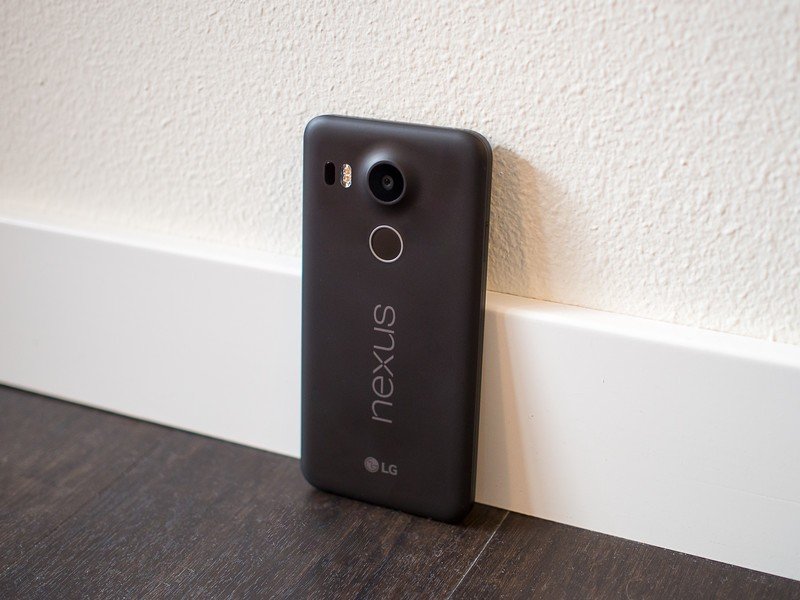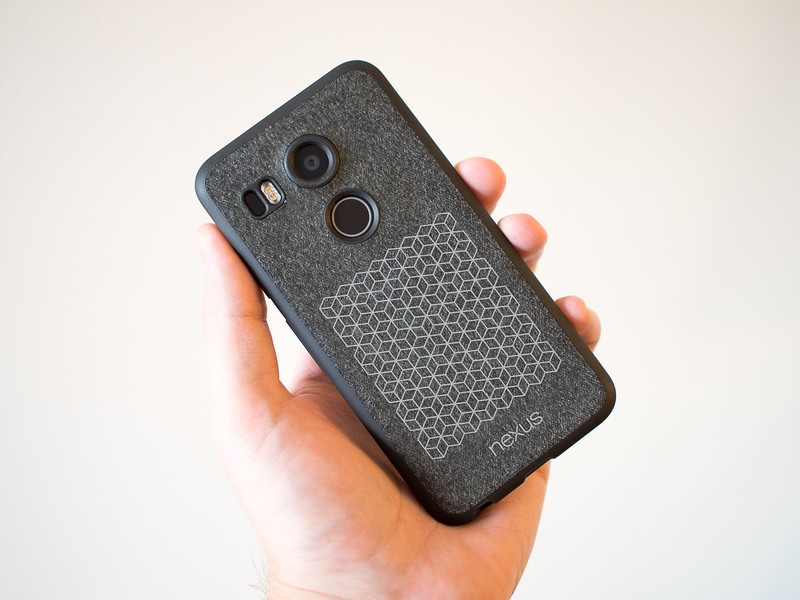Nexus 5X: A second opinion

Up until the day that the Nexus 5X was announced, I still held some kind of odd nostalgic desire to use the original Nexus 5. As I constantly see from other longtime Nexus 5 owners, there was something special about that phone that made it a joy to use despite the hardware being squarely "meh" and the battery life being borderline horrid. To those of us in that camp, the Nexus 5X seemed like a wonderfully-updated replacement for our beloved Nexus 5s.
I bought a Nexus 5X as soon as it was available, hardly considering the Nexus 6P instead, and used it from day one on Google's own Project Fi for the most all-in experience — now for a month straight. Following up on our great extensive review, I wanted to give my own opinions of using the Nexus 5X — read on.
Good, not great, hardware

I wrote pretty extensively comparing the Nexus 5X to the original Nexus 5 recently, in which I found the hardware between the two phones to be quite similar. Beyond some improved tolerances and slight changes in curves to make the phone fit in your hand a bit better, the 5X hasn't jumped very far from its predecessor launched in 2013 — and that's a bit upsetting.
The Nexus 5X offers a pretty good value at $379, but in 2015 there's a lot more competition at that price.
The Nexus 5X offers a pretty good value at a starting price of $379, but unfortunately for that money nowadays you can get something that both looks and feels a lot nicer. Sure there's more to a phone's experience (and cost of manufacturing) than just the external hardware, but in 2015 you expect a bit more than cheap plastic with some soft touch coating on it in the $300 to $400 price range.
But we can't overlook the places where LG and Google got things right on the Nexus 5X's hardware. The screen is really good (if LCDs are your kinda thing), the Nexus Imprint fingerprint sensor is great, the speaker is more than serviceable and the move to USB-C is welcomed. And as I'll get to in a little bit, Google didn't skimp in the camera sensor department either, which is great to see.
I've had no issue using the Nexus 5X every single day since it arrived, but that doesn't mean I've been overjoyed with the hardware experience. It doesn't feel great, nor does it feel like it's falling apart — it's just there, and I think we all expect a little more than that out of a phone today.
Be an expert in 5 minutes
Get the latest news from Android Central, your trusted companion in the world of Android
Software and performance

Marshmallow is a wonderful tune-up of Lollipop, and I've really enjoyed the small tweaks to things like Do Not Disturb and animations, as well as the big features like improved backups, doze and runtime permissions. That isn't something exclusive to the Nexus 5X, of course, but it does set it apart from other phones you can buy today in the same price range. And while Android 6.0 is hardly perfect — I think Google Now on Tap, among other things, needs some work— it's great to be able to use it now, rather than buy a phone with a promise of an update in the future.
I expect future updates to improve performance, but right now I'm not being blown away.
In typical Nexus fashion the Nexus 5X just feels a little sluggish and oddly buggy sometimes with its launch software. It isn't actually appreciably faster than the original Nexus 5 (which mostly says something about the differences in the processors) for most of my daily tasks. This doesn't come as any surprise to those who have used Nexus phones before, and I wholeheartedly expect it to get better in future releases considering that the Snapdragon 808 and 2GB of RAM are more than capable of handling stock Android 6.0. But what makes it odd this time around is that the Nexus 6P is by all accounts amazingly fast and bug-free.
The Nexus 5X is hardly slow, but then again it doesn't feel blazingly fast like other phones — including the Nexus 6P — do today. That's much the same experience as the external hardware, in that you're not blown away by the speed of the Nexus 5X when you use it, which is something I still feel more with the original Nexus 5 that's now over two years old.
Battery life is just fine, actually, and I feel the 2700 mAh battery is acceptable for a device of this size with just a 1080p display. Marshmallow's new Doze feature definitely adds a handful of percentage points throughout the day, and I've had very few days where I felt I needed to charge up earlier than my usual regimen of putting on a charger when I turn in for the night. That's a dramatic improvement over the Nexus 5, and fits in with my expectations of a phone today — get me through the full day without worry, save for some heavy days, and I'm happy.
Finally, a Nexus camera worth your time

One of the historic shortcomings of Nexus phones, the camera, has finally stepped up to meet the competition and I couldn't be happier about it. For all of the things the Nexus 6P does better than the Nexus 5X, the least we can say is that the cameras are nearly identical. A few different advanced features aside, the Nexus 5X at $120 lower down the price sheet offers the same great shooter as the higher-end Nexus, taking a huge step beyond any previous Nexus phone.
Though I'll still argue that the latest Nexus phones could really benefit from having OIS (Optical Image Stabilization), the 12.3MP sensor, fast lens and new image processing software combine to take some great pictures. The dynamic range on some shots can still leave something to be desired, and I still feel like the 5X leans on HDR+ processing too often, but this is quite simply the best Nexus camera to date.







My only real issue with the camera kind of ties into my previous talk about the software as a whole — it's just so. damn. slow. The Google Camera app is so very simple visually that it just adds to the frustration, as it can often take several seconds to go from opening up the camera app to actually focusing and taking a photo. Whenever you snap a few in quick succession — especially with HDR+ on — it takes a while for the phone to process them for you to see, triage and share. When you see other phones even less expensive than the Nexus 5X run laps around it in speed you know there's something that needs dramatic improvement.
The bottom line, for me

Much like choosing to continue to use the original Nexus 5 well beyond its time as the best Android phone you can get, there aren't many rational reasons to keep using the Nexus 5X today. It's basically a nostalgia play back to the good 'ol days, with a small screen, hardware that gets out of the way and a pretty good value proposition if you go with the base model.
If the Nexus 5X were released in any other year when Google decided to launch just one Nexus phone, it may be received a bit more positively. On its own it's a pretty solid phone, and a fresh take on the original Nexus 5 adapted to 2015. But when it launched alongside the Nexus 6P, which is one hell of a great phone with all of the same Nexus DNA for just $120 more, the stakes are a bit higher.
Having that other Nexus option available at the same time really makes you think about how bad you want the smaller size and lower price of the Nexus 5X — because those are the only two reasons why you'd pick it over the larger 6P, and there are several reasons why you wouldn't. There's nothing spectacular about the Nexus 5X. Nothing that wonderful drawing you in. And while I continue to use the 5X (yes, and that carpet-backed case), enjoying its smaller size and capable performance, I'm not blown away by it — the Nexus 6P, as unwieldy to me as it may seem, offers an overall better experience and is a superior choice.
Andrew was an Executive Editor, U.S. at Android Central between 2012 and 2020.

